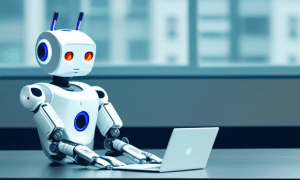In today’s software development landscape, the integration of automated testing, continuous integration (CI), and continuous delivery (CD) methodologies stands as a cornerstone for ensuring swift and high-quality software delivery.
Automated testing streamlines quality assurance efforts by reducing manual work and providing rapid feedback, while CI automates code integration and early testing, promoting collaboration and bug detection. CD further automates deployment, reducing risks and expediting release cycles. Together, these practices enable organizations to respond swiftly to changing demands and maintain a competitive edge in the fast-paced software development environment.
Below is the trend that rule 2023
1. Test Automation with low code to No Code
- Low code or No code is a platform which can be used by Technical and Non Technical teams to create/maintain test cases using GUI.
| Automation Complexity Comparison using CODE-BASED , CODE LESS Tools | ||
| Parameter | CODE-BASED TESTING | CODELESS/NO CODE TESTING |
| Programming Knowledge Required | High | Low to moderate |
| Tool Complexity | Higher | Lower |
| Test Execution Reporting | The customized reporting need coding/scripting | Able to generate/view pictorial/graphical representation of Test Results without any additional coding |
| Test Creation | Tests are created using code by developers or testers. | Tests are created using drag-and-drop, visual workflows, or record and replay. |
| Time to Create Tests | Longer | Shorter |
| Test Coverage | Higher coverage as tests can be highly customized. | Lower coverage as tests are created using pre-built modules and require less customization. But this also depends upon the tool we use |
| Test Execution | Automated using scripts written in the programming language. | Automated using a graphical interface, reducing the amount of coding required to execute tests. |
| Test Maintenance | Code changes may require test updates. | No coding knowledge is required for test maintenance. |
- Below is the comparison between Code based and Low Code/No Code Automation
2. Software Testing process with AI/ML
- AI and ML play a pivotal role in improving the efficiency, accessibility, and quality of software testing, benefiting every stage of the STLC.
- AI/ML streamlines test case generation, optimizing coverage and minimizing redundancy, ensuring more efficient test suites.
- With NLP, even QA professionals with minimal automation knowledge can automate test cases, democratizing the testing process and expanding its reach within the team.
- AI reduces maintenance efforts through self-healing processes. It identifies and corrects test script failures, ensuring stable, consistent test execution.
- AI assists in identifying defect trends and patterns, helping teams pinpoint areas for improvement in the application or product. This data-driven analysis enhances the overall quality of the software.
3. RPA
- RPA is mostly used to automated repeated redundant manual activities in an organization such as Workflow/ Approval process etc. to reduce the cost and improve the efficiency of activity
4. QAOps
- Quality Assurance with Software Operations referred as QAOps
- The goal of QAOps to achieve, Quality of the product by involving QA team to work closely with developer team and operations team for the Continuous Integration (CI)/Continuous Deployment(CD) process
5. Accessibility Testing
- People with various kinds of impairments are an equal part of the larger society. This makes it a moral responsibility for enterprises to release software and applications that are easily accessible to them.
- Web accessibility testing is the method of evaluating how easily users with disabilities can use a website.
- WAVE(Web Accessibility Evaluation Tool), NVDA (NonVisual Desktop Access),ARC Toolkit, CCA(Color Contrast Analyser) are few tools which are used for Accessibility Testing
6. Performance Testing
- The mobile and web apps that perform seamlessly under varying loads are bound to deliver a great customer experience (CX). In order to get high-performing digital mobile and web apps
- With the increasing adoption of AI and machine learning in IoT, performance testing becomes crucial to evaluate the efficiency and responsiveness of intelligent algorithms and decision-making processes.
7. SEO Compliance Testing:
- SEO Compliance your pages to be indexed by search engines more effectively, resulting in increased traffic and leads.
- SEO testing is the discipline of evaluating and, crucially, validating SEO theories and experiments.
- In SEO testing, you can typically influence three main areas:
- Search Appearance
- Technical
- Content
8. Cyber Security Testing:
- In cybersecurity testing, a highly trained professional investigates an organization’s systems through a series of tests that mimic the process of a wrongdoer hoping to gain access to the company’s system
- Cybersecurity testing is one of the easiest ways for companies to pinpoint specific vulnerabilities in their system
For most agencies in at-risk sectors, it is ideal to have penetration testing or even advanced adversarial emulation to identify the organization’s vulnerabilities and what can be done to remedy them
References:



